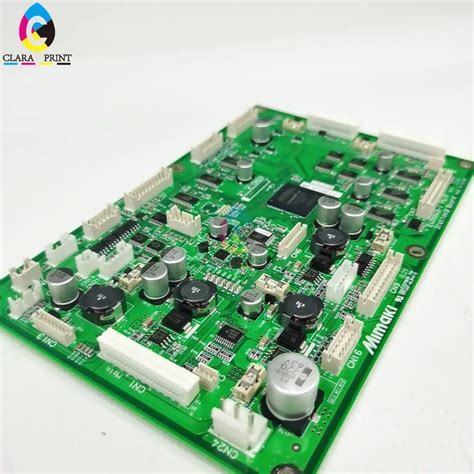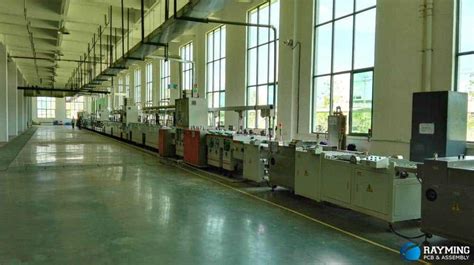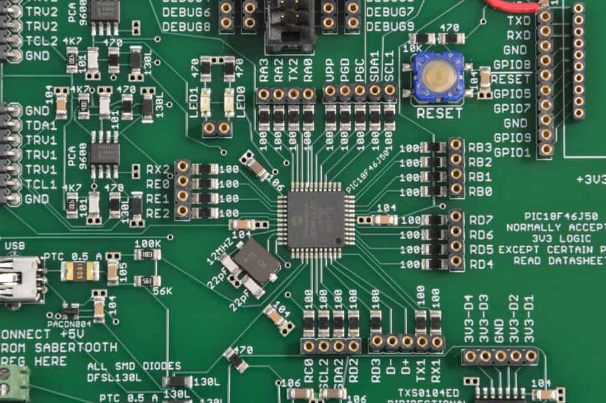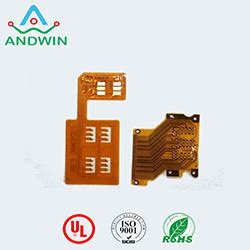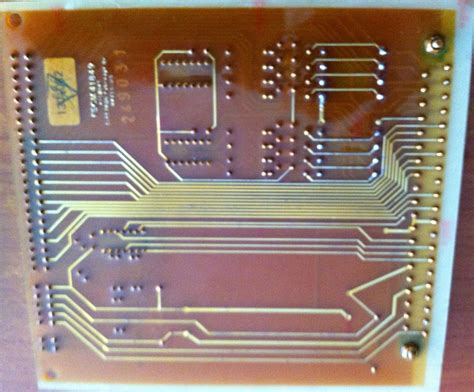Mastering the Art of PCB Assembly: Essential Tips and Insights
Key Takeaways
Mastering PCB Assembly is a skill that demands understanding and meticulous execution. Here are some of the key points to ensure successful PCB assembly. First, basic knowledge of PCB components and the assembly process is crucial. With this foundation, selecting the essential tools and equipment tailored for PCBA tasks becomes more straightforward. Emphasizing precision in component placement cannot be overstated, as it significantly affects the overall functionality of the board. Adequate mastery in soldering techniques ensures that connections are robust and defect-free.
Furthermore, troubleshooting is inevitable in PCB assembly—effective strategies for identifying and addressing common issues can save extensive time and resources. Adhering to best practices enhances reliability, minimizing potential failures in the final product. Lastly, navigating more advanced challenges often encountered in complex assemblies allows for greater efficiency and innovation in your projects.
By integrating these insights into your workflow, you elevate your capability to produce high-quality PCBA projects consistently.
Introduction to PCB Assembly: Understanding the Basics
PCB assembly (PCBA) is a fundamental process in the electronics manufacturing industry, encompassing the intricate task of constructing printed circuit boards by mounting various electronic components onto a PCB. This process is the backbone of modern electronic devices, from smartphones to sophisticated industrial machinery. Understanding the basics of PCB assembly is crucial for ensuring high-quality, reliable electronic products.
At its core, PCBA involves several key steps: designing the PCB layout, choosing and sourcing components, placing components on the PCB, soldering them in place, and finally testing and troubleshooting to ensure optimal functionality. The design phase includes creating an efficient layout that minimizes signal interference and maximizes performance. Choosing high-quality components and ensuring precise placement are vital to avoid issues such as poor connections or short circuits.
Soldering is another essential aspect of PCB assembly. Proper soldering techniques ensure robust connections that can withstand environmental stresses and operational demands. Mastering both manual and automated soldering methods can significantly affect the durability and performance of a PCBA.
Throughout these steps, maintaining meticulous attention to detail and adhering to best practices can significantly reduce errors. Understanding common pitfalls and mastering troubleshooting strategies are equally critical in ensuring smooth assembly processes.
By delving into these basics with a methodical approach, whether you’re a novice or an experienced engineer, you can achieve excellence in your PCB assembly projects.
Essential Tools and Equipment for PCB Assembly
When embarking on your PCB assembly journey, having the right tools and equipment is crucial for achieving precision and efficiency. The essential tools for PCBA include a high-quality soldering iron, which provides the necessary heat control for delicate components. A reliable multimeter is also indispensable, allowing you to measure electrical values accurately. Tweezers and magnifying glasses are vital for handling and inspecting small components, ensuring they are placed correctly. Additionally, having a hot air rework station can make a significant difference in soldering and desoldering processes, especially when working with surface-mount technology. Lastly, don’t overlook the importance of an anti-static wrist strap to protect sensitive electronic components from static discharge. By equipping yourself with these essential tools, you can navigate the complexities of PCB assembly with confidence and precision.
The Importance of Precision in Component Placement
Achieving precision in component placement is a critical aspect of pcb assembly (PCBA). Accurate placement ensures that electronic components align perfectly with their designated locations on the PCB, which is essential for optimal performance and reliability. Human error in this stage can lead to issues such as short circuits, signal integrity problems, and component failure. Utilizing advanced tools like pick-and-place machines and automated optical inspection (AOI) systems can greatly enhance accuracy. It’s also vital to maintain a clean working environment to prevent contaminants from affecting the integrity of solder joints. Attention to detail during this phase not only increases the efficiency of your assembly process but also minimizes the need for rework, saving both time and resources. By prioritizing meticulous component placement, you lay a solid foundation for building high-quality and reliable electronics.
Mastering Soldering Techniques for Quality Assemblies
When it comes to PCB assembly, mastering soldering techniques is essential for creating quality assemblies. Whether working on a pcba prototype or a large-scale production run, precision in soldering ensures the reliability and functionality of the final product. Begin by choosing the right solder type and flux to ensure proper adhesion and conductivity. Use a temperature-controlled soldering iron to maintain consistent heat and avoid damage to sensitive components.
Properly preparing the surfaces to be soldered is equally crucial. Clean both the PCB pads and component leads using isopropyl alcohol to remove any contaminants that might hinder solder flow. Next, use a small amount of solder to tin the tip of your iron; this enhances heat transfer and improves joint quality. When making the connection, ensure that both the pad and lead are heated uniformly before feeding in the solder—avoiding cold joints or insufficient connections.
Employ consistent techniques for different types of joints, whether through-hole or surface mount. For through-hole components, apply heat to both the lead and pad simultaneously before adding solder; for surface mount devices (SMDs), pre-solder one pad then position your component using tweezers before heating the adjacent pad.
Below is a table summarizing some key tips for effective soldering:
| Tip | Description |
|---|---|
| Solder Type Selection | Choose appropriate solder/flux for your project |
| Clean Surfaces | Clean PCB pads and leads with isopropyl alcohol |
| Temperature Control | Use a temperature-regulated iron |
| Proper Heat Application | Heat pad and lead uniformly beforehand |
| Consistent Practice | Tackle different joints with specific techniques |
Following these methods reduces errors and enhances your assembly’s durability, ensuring each project meets high standards of quality. Keep refining your skills with each assembly, as practice is crucial in achieving expert proficiency in PCB assembly tasks like soldering.
Effective Troubleshooting Strategies for Common PCB Issues
Effective troubleshooting is a critical component in ensuring the smooth and reliable operation of PCB Assembly. First and foremost, it is essential to identify the root cause of any issues that arise. One common problem is component placement errors, which can often lead to circuit malfunctions. Utilize high-resolution visual inspection tools to meticulously examine each component’s alignment and orientation.
Furthermore, soldering defects such as cold solder joints or bridging can significantly impact the performance of your assembly. Use thermal imaging equipment to detect irregularities in solder flow and ensure that each connection complies with industry standards.
“A tip for avoiding soldering issues is to consistently calibrate your soldering equipment and use high-quality solder materials.”
Additionally, it’s crucial to be aware of potential PCB contamination. Even minor contaminants can cause short circuits or signal integrity problems. Implement a robust cleaning protocol post-assembly using appropriate solvents and ultrasonic cleaning systems.
Pay close attention to power integrity issues, as inadequate power supply levels or distribution can result in operational failures. Consider employing advanced diagnostic tools such as oscilloscopes or network analyzers to precisely diagnose power-related anomalies.
Lastly, maintaining updated documentation and logs throughout the PCBA process aids in swiftly identifying recurring issues and implementing preventive measures. By mastering these troubleshooting strategies, you can enhance the reliability and functionality of your PCB projects significantly.
Best Practices for Ensuring PCB Assembly Reliability
Achieving high reliability in pcb assembly is quintessential for producing quality products that can withstand the rigors of real-world applications. One of the core practices is to perform thorough component placement. This involves meticulously positioning each component according to the design specifications, ensuring they are aligned correctly and making good contact with the PCB pads. Attention to detail in this step can prevent many common issues such as misalignment and poor solder joints.
Another crucial factor is mastering soldering techniques. Proper soldering not only secures components but also ensures optimal electrical connections. Utilizing the right soldering temperature, adequate flux, and precise timing can significantly enhance the integrity of your PCBs.
To further enhance reliability, it’s important to implement rigorous troubleshooting processes during and after assembly. This involves inspecting for board defects, such as shorts, opens, or cold joints, often using advanced tools like X-ray inspection or Automated Optical Inspection (AOI) systems.
Environmental factors like humidity and temperature also play a vital role in affecting pcba reliability. Ensure your production environment maintains controlled conditions to minimize risks associated with moisture ingress and thermal stresses.
Moreover, adhering to standardized protocols such as IPC standards can guide you in maintaining consistency and reliability across different projects. Finally, continuous learning and adapting to new technologies will keep your skills sharp and help you tackle newer challenges more effectively.
By incorporating these best practices into your workflow, you can significantly boost the reliability of your PCB assemblies, resulting in robust electronic products that meet high-quality standards.
Navigating Advanced Assembly Challenges and Solutions
In PCB assembly (PCBA), advanced challenges often arise and demand adept handling to ensure successful outcomes. A common issue is the precise alignment and placement of fine-pitch components. The use of automated pick-and-place machines can significantly enhance accuracy, yet manual inspection remains indispensable to catch misalignments early. Another frequent challenge is the soldering of complex, high-density boards where thermal profiles must be meticulously managed to prevent component damage or cold solder joints.
Addressing these issues requires not only expertise but also the right tools. Utilizing X-ray inspection systems can reveal hidden defects such as voids or bridges under Ball Grid Arrays (BGAs) and other intricate components. Additionally, adopting controlled reflow soldering techniques helps in achieving consistent and reliable solder joints.
For advanced troubleshooting, employing in-circuit testing (ICT) combined with functional testing (FCT) provides comprehensive insights into both electrical performance and functional behavior of the assembled PCBAs. This dual-test approach ensures that potential faults are identified and rectified before final deployment.
To further enhance reliability, incorporating a Design for Assembly (DFA) approach during the initial design phase is crucial. This involves planning for manufacturability by optimizing component layout, reducing potential points of failure, and ensuring that assembly processes are as streamlined as possible.
Ultimately, mastering advanced assembly challenges in PCB projects hinges on a blend of sophisticated technology and experienced craftsmanship. By staying abreast of industry best practices and leveraging cutting-edge tools, one can confidently navigate these complexities to produce high-quality assemblies.
Conclusion
Mastering PCB assembly is a meticulous but rewarding endeavor. By honing your skills in component placement, mastering soldering techniques, and employing effective troubleshooting strategies, you can transform complex PCBA projects into seamless, high-quality assemblies. Emphasizing precision and following best practices ensures reliability and functionality. As technology evolves, staying abreast of advanced assembly techniques is crucial for tackling new challenges. This comprehensive guide provides the insights and tools necessary to excel in PCB assembly, making it an indispensable resource for both beginners and seasoned professionals.
FAQs
PCB assembly can be a detailed and intricate process, raising numerous questions, especially for those new to the field. Below are some frequently asked questions and expert answers to help you navigate common concerns and challenges.
What is PCB assembly (PCBA)?
PCB assembly or PCBA refers to the process of assembling electronic components onto a printed circuit board (PCB). This involves several steps, including soldering, placing components accurately, and ensuring electrical connections are secure.What do I need to get started with PCB assembly?
Essential tools and equipment include soldering irons, stencils, solder paste, pick-and-place machines for accurate component placement, and reflow ovens for soldering.How can I prevent common PCB assembly issues?
Prevention starts with precise component placement and effective soldering techniques. Ensuring the quality of solder joints and regularly inspecting for defects like shorts or open circuits can significantly reduce issues in PCBA.What troubleshooting methods can I use for PCB assembly problems?
Effective troubleshooting strategies involve visual inspection under magnification, using continuity tests with a multimeter, and employing thermal cameras to identify hotspots that might indicate defective components or connections.How do I ensure the reliability of my PCB assemblies?
Following best practices such as thorough testing procedures, using high-quality materials, and adhering to design standards can greatly enhance the reliability of your assemblies.
Click Here For Expert Guidance
For more detailed insights and guidance on mastering PCB assembly, please click here.

